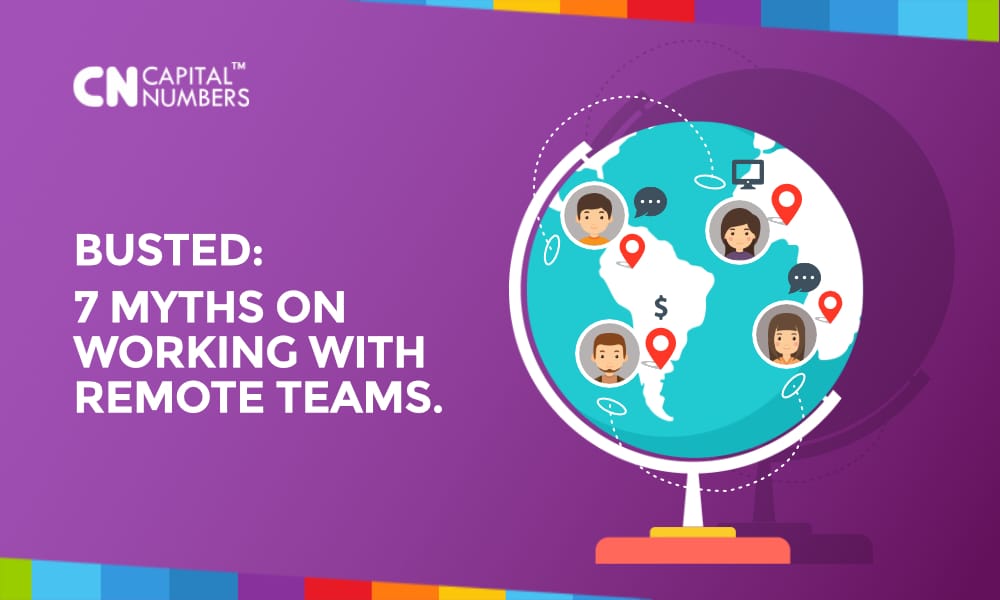Busted: 7 Myths of Working with Remote Teams
Table of Contents
With Cloud Storage and Cloud computing becoming a way of life and business for most big organizations throughout the world, it is now slowly becoming more and more common for companies to hire remote employees. That is, employees who would not be working on the company premises, and in some cases, never even meet face to face with the company’s leadership. They would, instead, be hired based on virtual interviews and online tests. This might sound like a novelty, but it is slowly becoming a reality. The most common forms of cloud working are working on mobile, or from a personal computer at home or any remote corner of the world.
There is a reason why remote work is becoming more popular. Skilled employees are now searching for positions which are autonomous and allow for more freedom. This not only helps them to spread their wings but also nets the company good returns. In this article, we’re going to dispel some of the most popular misgivings and myths that surround remote working.
- The first myth is that people who work remotely are not as productive as the employees who work on a site. However, with the presence of modern-day tools for tracking employee activity and progress, such as Slack, there are a lot of ways in which remote employees can be managed and productivity can be monitored. The key is to find out a stable mode to evaluate and measure the performance of others.
- A second misconception is that employees who are remote aren’t as skilled. According to this misgiving, skilled employees prefer a formal office environment. They feel that remote employees would never be able to qualify for lead positions. This is especially true for cases where the employee is an independent freelancer or contractor. This, however, is just the contrary. Hiring remote employees would mean expanding outside of your geographical boundaries and being able to mine for talent in uncharted territories where your business might not be physically present.
- A third myth that plagues some businesses is, “It is difficult to find remote employees”. This, while true to some extent, can be remedied by reaching out to talent-listing sites such as LinkedIn. There are also innumerable forums and sites which list independent contractors and freelancers who might be inclined towards remote working. It is also useful to locate retired professionals who might be open to earning some extra money working from home.
- Companies often think that it is extremely difficult to manage and communicate with such employees, but in today’s world, where workplaces are empowered with forums and message boards such as Trello and Basecamp, it is no longer difficult for a company to communicate with remote employees. Slack is a real-time communication portal that is very similar to Skype. Here, not just individuals, but teams too can communicate with one another and create the sense of a virtual workplace.
- Some people think that remote work has no scope beyond IT and data entry. This was true for a considerable amount of time, but now you see companies hiring remote workforces for product development, sales and marketing and work related to SEO.
- There is a common misconception that remote employees can not develop any feeling of kinship with the company or its goals. That, however, would not be true. There are plenty of qualified freelancers who are used to working from home and who commit to a company for the right price.
- Last, but not least, remote employees are able to be more flexible with the hours they work. They have no demand or need for changes in their work schedule to suit their own convenience. Their hours can be ensured with a virtual agreement/contract.
These, in short, are some of the common myths about hiring remote employees that now, hopefully, stand busted.















